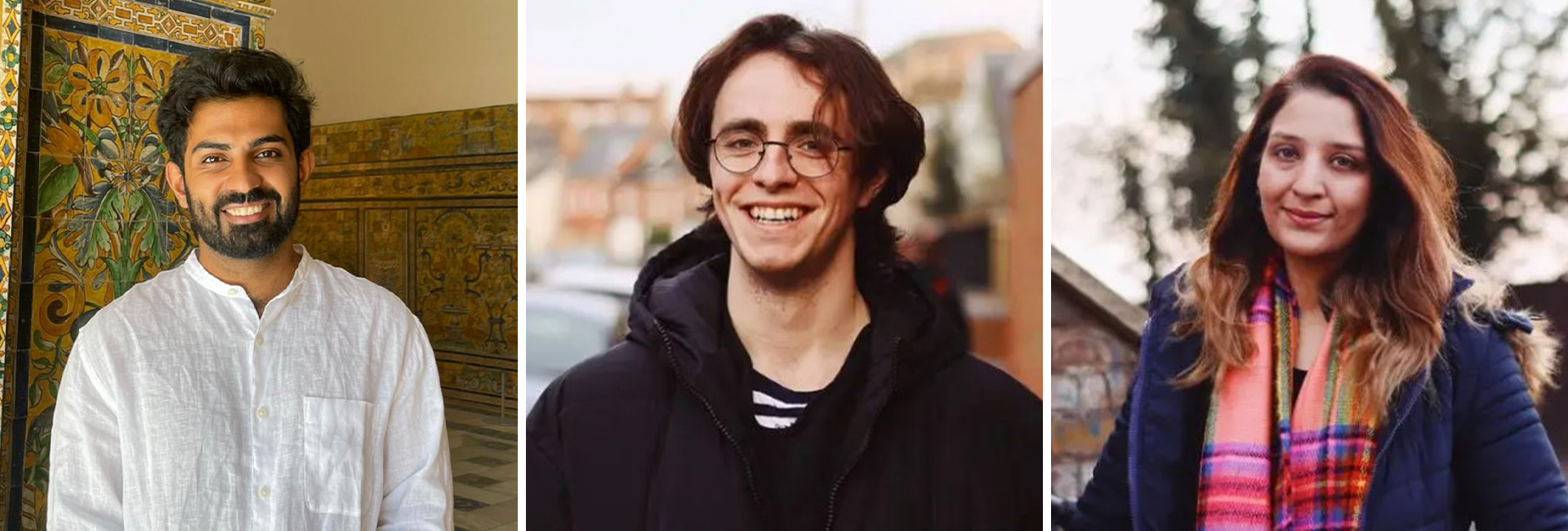(December 5, 2024) Gina Miller’s fight for accountability has been decades in the making. Born in Guyana and sent to the UK for her education, she learned resilience early when political upheaval back home left her to support herself and her brother as a teenager. Co-founding SCM Direct, she challenged unethical financial practices and launched the True and Fair Campaign to protect ordinary investors. Her 2016 legal battle to ensure parliamentary oversight during Brexit brought constitutional law into the spotlight. Named Britain’s most influential Black person in 2017, the Global Indian has built a career spans activism, entrepreneurship, and fearless legal challenges that have reshaped public accountability.
Hotels lined the seafront in Eastbourne, East Sussex, where holiday makers flocked each year. Gina Miller stood before them too, but she wasn’t just another vacationer with her family. Instead, the fourteen-year-old was looking for a job. She and her brother had been sent from Guyana to benefit from a boarding school education in the UK but life took an abrupt turn when she turned 14. She received a letter from her mother telling her that Guyana’s then president had introduced strict currency controls, and that it would be a while before they could send money out to Gina and her brother.
Determined not to let her parents’ sacrifices go in vain, Miller tottered into a hotel in a pair of high heels and a formal skirt she had bought at a second-hand store, hoping they would make her pass for 16. She was nervous of what was in store, and seething at the injustice and chaos that a belligerent political system could wreak on the public. On the outside, however, she was the picture of composure. “I had to be the swan my mother had told me to be – paddling like fury under the surface but cool, calm and graceful on the surface,” she writes, in The Guardian.

Gina Miller | Photo: Foreign Policy
A rough start
She landed a job at the first hotel she entered, at the age of 14, “cleaned toilets, lugged about a vacuum cleaner so heavy my arm ached, and emptied dustbins full of goodness knows what,” she recalled. She made the most of her situation in other ways too, even making notes of the books left on beside tables, so she could take them out of the local library.
“That was the summer I learned the pain of having to grow up quickly,” she writes. “Back home, the currency restrictions, part of a tough policy that tried to ensure people did not take their money out of the country as the economic decline continued, were in place for years.” In a way, her fourteenth year marked her last as a carefree child. All too soon, she had to learn how to live as an adult, take on responsibility, and care for her brother.
Life in Guyana’s Indian community
Gina Miller was born Gina Nadira Singh in British Guiana (now Guyana), to Savitri and Doodnauth Singh. Her parents belonged to Guyana’s Indian community, which traced its roots back to the mid-19th century, when Indians were taken to British colonies as indentured laborers to work on sugar plantations.
Starting in 1838, approximately 240,000 Indians were taken to Guyana over the next 80 years, always in harsh, exploitative conditions. After enduring the perils of the long sea voyage, they faced challenging conditions in their new homes as well. However, they learned to survive and when their indentures ended, many decided to stay on in Guyana. Today, about 40% of Guyana’s population has Indian roots, and the community developed its own identity while retaining strong ties to its cultural roots; Diwali, Holi and Eid are now important festivals in Guyanese culture.
I grew up in a very political household. My father was an attorney general, and I grew up with a strong sense of justice. Because of that I knew a lot of things that went wrong as well. And I saw the human cost of that, which tended to be women and children. I realised that as a woman I could play quite a different role to the men who were fighting for the same principles I believe in – Gina Miller
Her father, Doodnauth Singh, grew to become a pillar of the Guyanese community, and served as the country’s Attorney General from 2001 to 2009. He then moved into politics, joining the People’s Progressive Party and becoming a member of the National Assembly. “I grew up in a very political household. My father was an attorney general, and I grew up with a strong sense of justice. Because of that I knew a lot of things that went wrong as well. And I saw the human cost of that, which tended to be women and children. I realised that as a woman I could play quite a different role to the men who were fighting for the same principles I believe in,” she told The Hindu.
Racism at law school
Miller followed in her father’s footsteps and went on to read law at the Polytechnic of East London (now University of East London) but was forced to abandon her studies. In her book, Rise: Life Lessons in Speaking Out, Miller writes that she gave up on her dreams to be a criminal barrister following a vicious attack in the street.

By this time, Miller’s life had already seen plenty of plot twists. She had moved to Bristol to marry a boyfriend who was ten years older, and the couple set up a photographic service for estate agents. They also had a child, Lucy Ann, who was born with symptoms of autism, dyslexia and dyspraxia. The marriage crumbled and five years later, Miller, now a single parent, enrolled in law school. She juggled part time jobs, did some part-time modelling and in her final year, entered a physically and emotionally abusive marriage to a city financier named Jon Maguire.
In her book, which The Guardian describes as a “rallying call to women who have suffered setbacks, particularly at the hands of men,” she describes two major incidents of physical abuse. One was the “brutal” attack she faced as a student, which she doesn’t explain in too much detail, other than to say that her attackers were students at her university. “I didn’t want people to feel sorry for me,” she told the Guardian. “(And) I have lots of detractors and they could use that. All the way through writing this book I had to have a sixth sense of how every word could be manipulated and used against me.” Incidentally, she believes that she was attacked because she was not behaving “as she was supposed to be behaving,” and while the incident was definitely racially-driven, the perpetrators were Asian who had mistaken her for being Indian.
Things did eventually get better, however. In 1990, she joined the BMW Fleet Division as a marketing and event manager, and two years later, started a speciaist financial services marketing agency. In 1996, she launched the Senate investment conference programme.
The Black Widow Spider

Gina and Alan Miller
2009 was a big year for Gina Miller. Her marketing consultancy business did well, and she soon had a top client list which included clients from private medical specialists in Harley Street (BBC). So, in 2009, she used the money she made to co-found an investment firm with her third, and current husband, Allan Miller. The firm, SCM Private (now SCM Direct), is an investment firm that supports smaller charities. “I realised it was my money, I could do what I wanted with it and so I used that money to get involved in social justice,” Miller said in an interview.
Her experiences in the UK, the political injustice back home in Guyana, and witnessing her father fight for his people, lit the fire of activism in Miller too. In 2012, Miller started the True and Fair Campaign, which became a platform for greater transparency in the fund management industry in the City of London.
The fight for transparency in the financial sector
In the early 2010s, the UK was seeing austerity measures brought in by the government in response to the financial crisis of 2008, which had led to widespread loss of public trust in banks and investment firms. There were cuts in public spending that disproportionately affected vulnerable communities, and a growing resentment towards the perceived excesses of the financial elite. The fund management industry was being criticised for hidden charges, high management fees and a lack of accountability. The worst hit were pensioners and ordinary investors, who had no idea how much of their money was being eaten up by these ‘costs’.
The True and Fair Campaign advocated for clear disclosure of fund management fees and practices, challenging a rich and opaque industry that had used its wealth and power to resist regulation and transparency to maximise profits. Naturally, this did not go down well with the financial elite, and Gina Miller earned the nickname ‘black widow spider’. She persevered, though, and her work would bring to light the stark imbalance of power between financial institutions and their clients. These principles of ethics and transparency were embodied in her own firm, SCM Direct, which became known for its commitment to ethical investment practices.

The Brexit story
By 2016, Gina Miller had “spent ten years fighting rip-offs in the city” and was “vocal when I think things are wrong.” What was wrong at the time happened to be then PM Theresa May’s attempt to trigger Article 50 – the formal process for leaving the EU – without the Parliament’s mandate. To Miller, this was a major breach of constitutional norms, and a dangerous precedent, for it bypassed the elected representatives of the people. In November 2016, she initiated a judicial review against the UK government’s plan, using her own money to do so. A month later, the High Court ruled in her favour, and in 2017, the Supreme Court upheld the decision. This meant that Brexit could not be initiated without parliamentary consent.
During this time, Miller suffered shocking online abuse, including r*pe and death threats against her and her family, writes the BBC. “It has changed the way we live our lives, and the conversations we have with our children,” she told The Financial Times. “We use humour a lot because that’s the only way to get through it.” Fortunately, the legal system remained on her side, and an aristocrat who put a £5,000 “bounty” on Miller was sentenced to 12 weeks in prison.
In 2017, Miller was named Britain’s most influential black person. “it’s amazing to get an accolade when what I’ve done has solicited a huge amount of abuse,” she said, when she received her title. “To have somebody acknowledge me is extraordinarily kind and counters a lot of what I still get on a daily basis.”
In 2009, she took on former PM Boris Johnson, who controversially attempted to ‘prorogue’, or halt the activities of Parliament, in order to limit their debates and discussions in case they voted to prevent a potential no-deal Brexit. Critics like Miller saw this as an abuse of power, and the Supreme Court agreed with them. “They will push the law, they will push the Constitution and they will even bend it to get their own way,” Miller told the press after the ruling.

The True and Fair Party
In September 2021, Miller announced the foundation of a new political party, the True and Fair Party, which was formally launched on January 13, 2022. A month later, the Renew Party also merged its operations with the True and Fair Party. Miller was the party’s candidate for Epson and Ewell for the 2024 general election, but was not elected.





